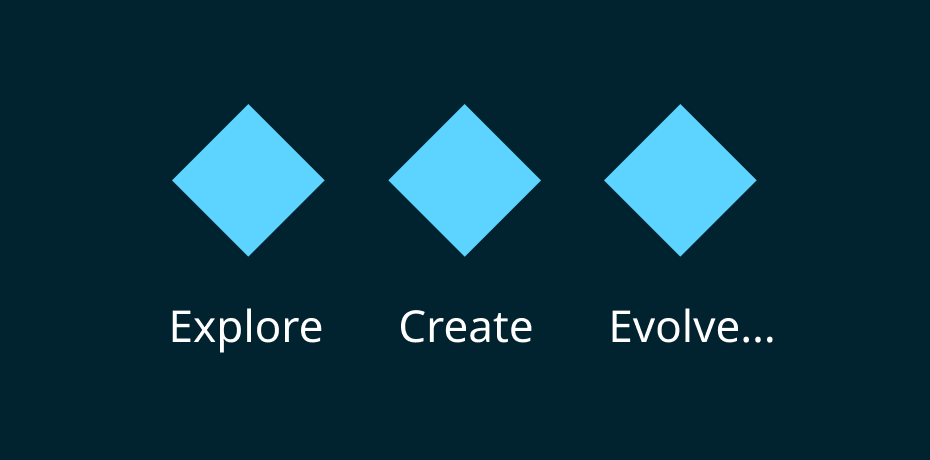The Missing Piece:
Why the Double-Diamond Model Needs a Third Diamond
As a UX designer, I’ve led products from concept to launch using the Double-Diamond model. The solutions were well-researched, prototyped, and delivered successfully. But a few months after launch, feedback starts coming in: the product isn’t scaling as expected, user needs have evolved, and the initial solution no longer fully meets the demands of a growing audience.
It’s then I realize that the project didn’t account for post-launch adaptability, and now I’m faced with the task of revisiting the design—without the same resources or momentum. This is a scenario that I (and I guess many other designers) have encountered: even well-executed projects often struggle to stay relevant after delivery. The Double-Diamond model, while an excellent framework for problem-solving and solution development, doesn’t include a formal process for what comes after.
That’s why I believe the model needs a third diamond, focusing on post-launch sustainability and scalability, ensuring the long-term success of our designs.
The Enhanced Double-Diamond Model: Introducing the Third Diamond
The Double-Diamond model, developed by the British Design Council, is widely used to guide the design process. It emphasizes two key phases:
Explore (which includes Discover and Define) and Create (covering Develop and Deliver).
However, I’ve noticed that the design process doesn’t end once a product is delivered. User behaviors change, technologies evolve, and systems grow more complex.
To address this, I’m introducing a third diamond—Evolve—to the framework. Here’s how this enhanced model works.

Explore: Getting to the Root of the Problem
The first phase stays the same, focusing on understanding the problem from every angle.
Discover
Goal: Dive deep into user behaviors, motivations, and the context surrounding the problem.
How: Conduct interviews, observations, and competitive analysis to uncover insights. This stage ensures I’m solving the right problem, not just a symptom of a deeper issue.
Define
Goal: Synthesize insights and clearly frame the challenge at hand.
How: Use personas, journey maps, and problem statements to focus the team’s energy on the most impactful opportunities.
Create: Designing and Delivering the Solution
Once the problem is defined, the second diamond focuses on ideation and development.
Develop
Goal: Explore a range of ideas and prototypes to solve the problem.
How: Co-design sessions, sketching, and rapid prototyping help ensure I’m not just jumping to conclusions. Early testing helps refine concepts before significant resources are invested.
Deliver
Goal: Bring the solution to life.
How: Finalize the design, iterate based on user feedback, and execute the development. This phase culminates in a launch-ready product or service.
At this point in the traditional Double-Diamond model, the project would be considered complete. But in my experience, this is where the real challenges often emerge.
Evolve: Sustaining and Scaling the Solution
Once a product is out in the world, it needs to grow and adapt. This is where the Evolve diamond comes in.
Sustain
Goal: Ensure the solution remains relevant over time.
How: I monitor user feedback, track usage patterns, and conduct continuous testing to identify emerging issues. This helps maintain a healthy product lifecycle, adapting to the changing needs of users.
Scale
Goal: Expand the solution to new markets or use cases.
How: I plan for scalability early by identifying opportunities for growth, whether it’s entering new regions, supporting different user groups, or integrating with other services. Successful scaling requires thoughtful resource allocation and future-proofing.
By adding this third diamond, I’m acknowledging that a designer’s work is never truly done. Design doesn’t stop at delivery—it’s a continuous process of iteration, adaptation, and growth. Products and services must evolve in response to changing user needs, technological advancements, and market trends. With this third phase, I can ensure that my designs not only meet the immediate needs of users but continue to provide value as those needs evolve.
Why the Third Diamond Matters
The Triple-Diamond Model addresses several pain points I’ve faced post-launch:
- Future-Proofing: The third diamond encourages me to think beyond the immediate solution and consider how it can be sustained and scaled over time.
- Continuous Feedback Loop: Unlike the traditional model, which can feel linear, the third diamond reinforces the importance of ongoing user feedback and continuous improvement.
- Holistic Approach: By integrating post-launch adaptability, the Triple-Diamond Model is more applicable to today’s complex, ever-evolving products and services.
Finishing thoughts
Designing for sustainability and scalability is no longer optional in today’s fast-paced world. The Triple-Diamond Model not only offers a structured approach to solving problems but also provides a pathway for continuous improvement. By incorporating an Evolve phase into my design process, I can ensure that the solutions I create remain adaptable, scalable, and ultimately successful in the long term.
As a designer, my goal is to create impactful experiences that stand the test of time—and that means thinking beyond the deliverable. The future of design thinking lies not just in solving today’s problems, but in evolving with tomorrow’s opportunities.
